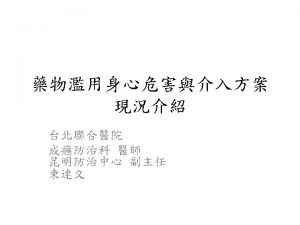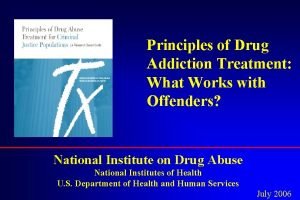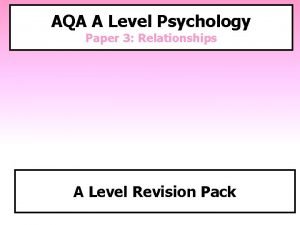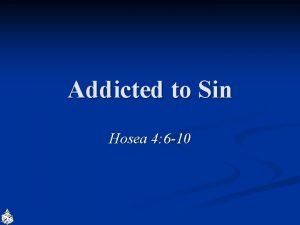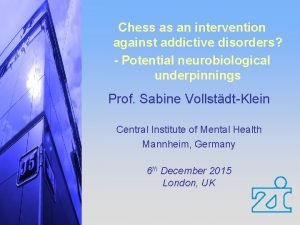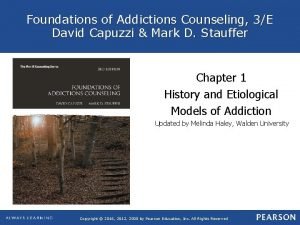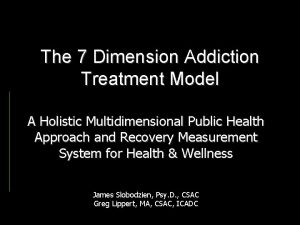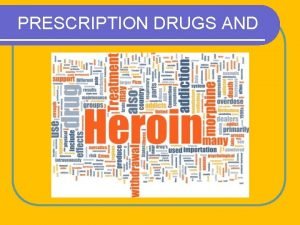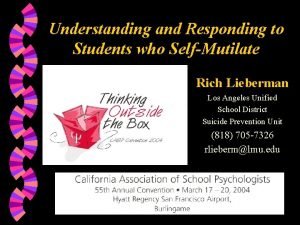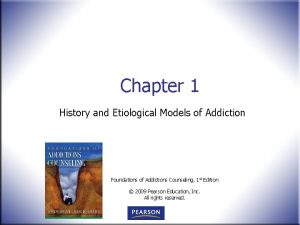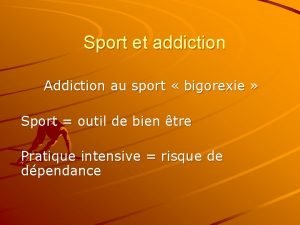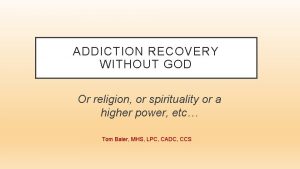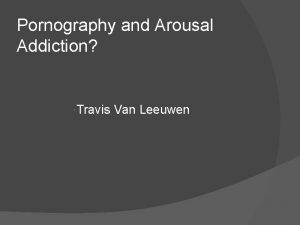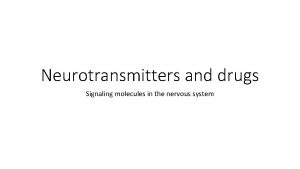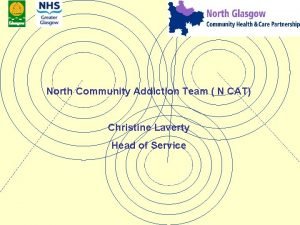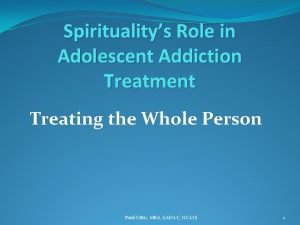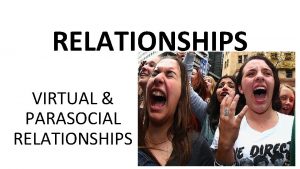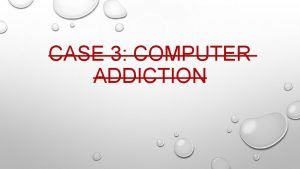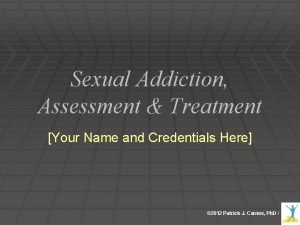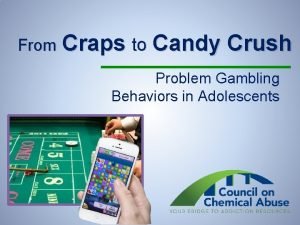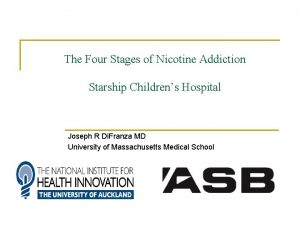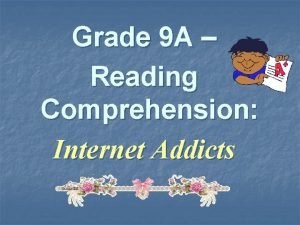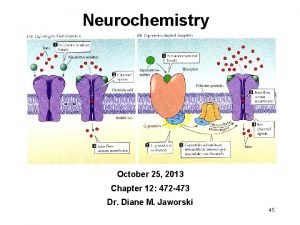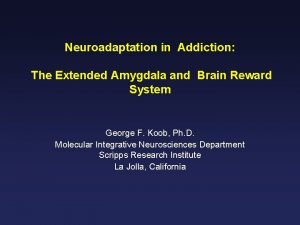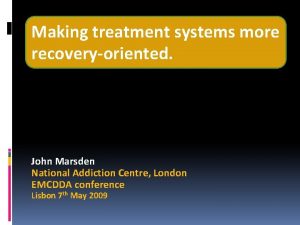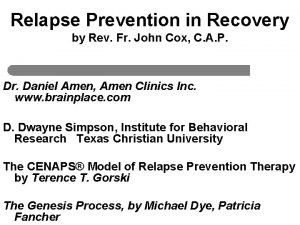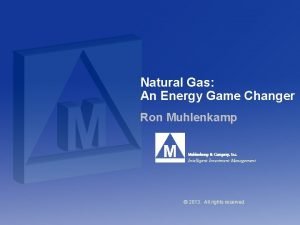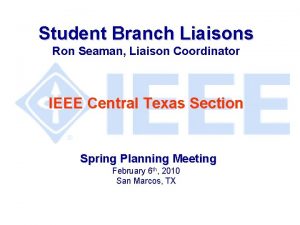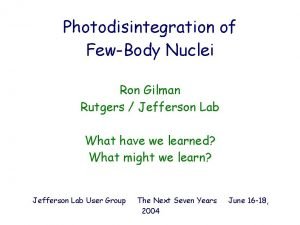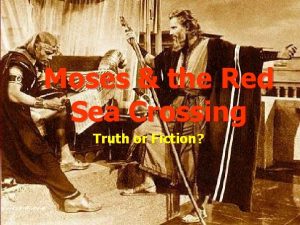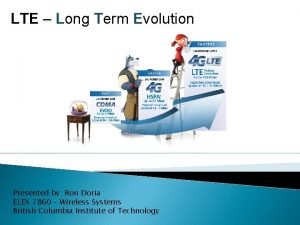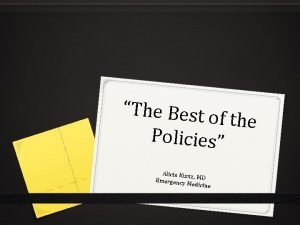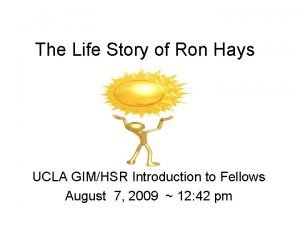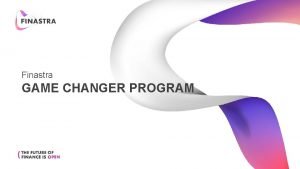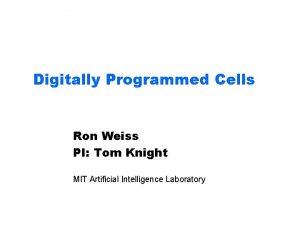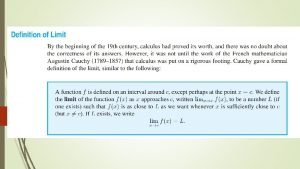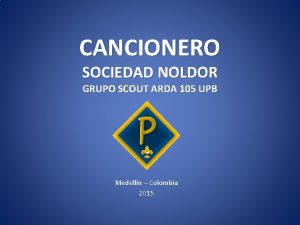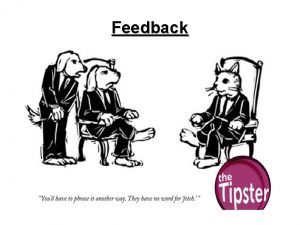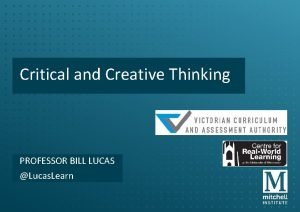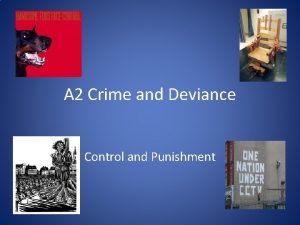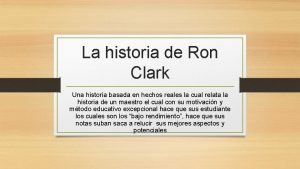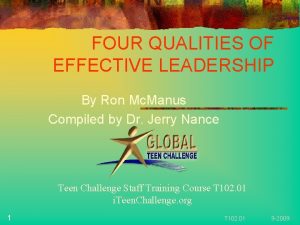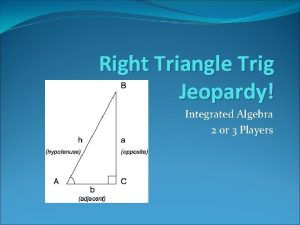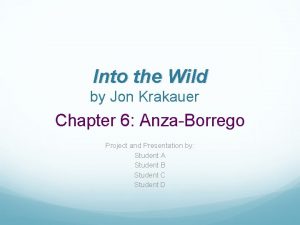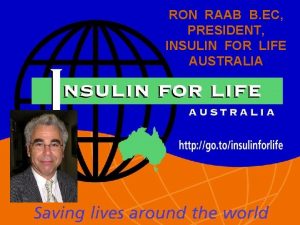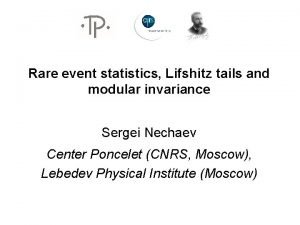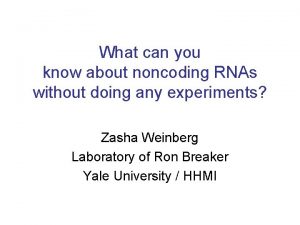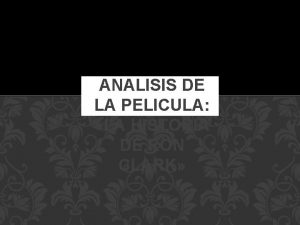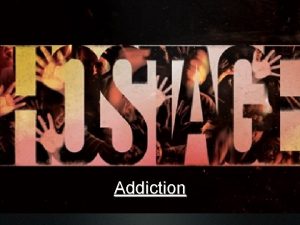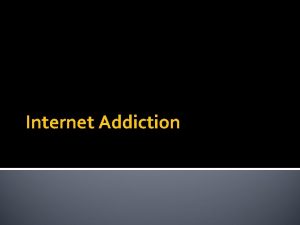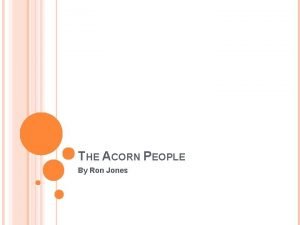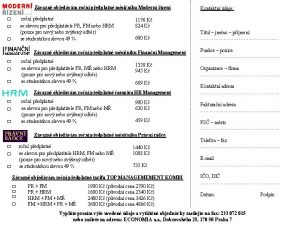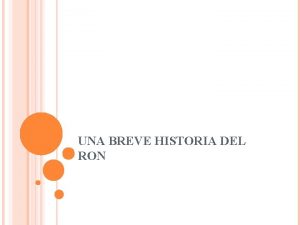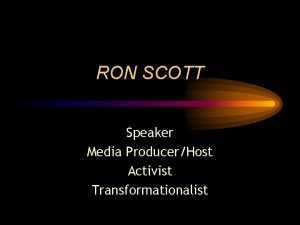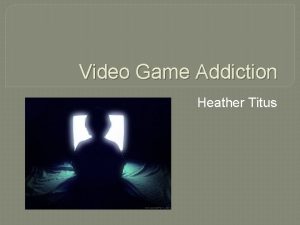Understanding Addiction Dr Ron Mottern Understanding Addiction What



























































- Slides: 59

Understanding Addiction Dr. Ron Mottern

Understanding Addiction What It Is

Drugs of Abuse Hard Drugs Soft Drugs

Understanding Addiction If you listed ANY difference in “hard” and “soft” drugs – you’re wrong. “Hard” and “soft” are subjective, sociological concepts. ALL DRUGS - regardless of the manner in which they enter the bloodstream - eventually end up affecting the brain.

Understanding Addiction Every new drug is “the world’s most dangerous drug. ”

Understanding Addiction List three drugs in order of their addiction potential: 1. 2. 3.

Understanding Addiction If you listed ANY drugs – you’re wrong. Addiction IS NOT a PHYSICAL concept. Addiction is a PSYCHOLOGICAL concept. This DOES NOT mean that the mind (psychology) and body (physiology) are separate and do not influence one another. The mind-body is one holistic system. The body influences the mind (the brain is a part of the body) and the mind influences the body.

Substance Dependence v. Addiction Substance dependence A maladaptive pattern of substance use, leading to clinically significant impairment or distress, as manifested by three (or more) or the following, occurring at any time in the same 12 -month period: *Tolerance (using more and more to get the same effect) *Withdrawal (physiological symptoms) Taking larger amounts or longer than intended Persistent desire or unsuccessful efforts to cut down or control substance use Time spent in obtaining, using or recovering from effects Important social, occupational, or recreational activities are given up or reduced because of substance use Use continues despite knowledge of persistent physical or psychological problems Diagnostic and Statistical Manual of Mental Disorders, 4 th ed. , Text Revision (DSM-IVTR)

Substance Dependence v. Addiction Substance dependence is a list of characteristic BEHAVIORS with the physiological indicators of tolerance and withdrawal. Substance dependence is continuing to use despite harmful effects.

Understanding Addiction The difference between PHYSICAL DEPENDENCE and PSYCHOLOGICAL ADDICTION: Physical Dependence Tolerance - Can I develop a tolerance to it? Withdrawal - Will I experience withdrawal if I stop using it? Psychological Addiction Making choices to do something over and over again Addiction is a CHOICE

Understanding Addiction Why do they do that?

Understanding Addiction A New (Old) Theory

Understanding Behavior: Why We Do Everything We Do Choice Theory Psychology

Axioms of Choice Theory The only persons whose behavior we can control is our own. All we can give another person is information. All long-lasting psychological problems are relationship problems. The problem relationship is always a part of our present life. What happened in the past has everything to do with what we are today, but we can only satisfy our basic needs right now and plan to continue satisfying them in the future. We can only satisfy our needs by satisfying the pictures in our Quality World. All we do is behave. All behavior is Total Behavior and is made up of four components: thinking, doing, emotions and physiology. All Total Behavior is chosen, but we only have direct control over the acting and thinking components. We can only control our feeling and physiology indirectly through how we choose to act and think. All Total behavior is designated by verbs and named by the part that is most recognizable.

The Brain as a Control System 5 Basic Needs Profiles Wants Quality World Comparing Place Creating Place Total Behaviors Perceptual Filters

The 5 Basic Needs

Needs Profile

Needs are Motivators The Basic Needs are first and foremost motivators. They motivate us to do everything that we do. Everything we do in this life is an attempt to meet our Basic Needs.

Wants

Everything I Know World The everything I know (EIK) world is just that – it contains everything we know. It is the sum total of our knowledge.

Filters Sensory filter How we know the world Hearing, seeing, feeling, smelling, tasting Perceptual filter How we understand the world Paradigms, beliefs, points of view Our perceptions determine our reality Reflexive loop between the EIK world and the Quality World

Perceptual Filter The Business of Paradigms video – Joel A. Barker Kuhn, T. (1962). The structure of scientific revolutions. Chicago, IL: University of Chicago.

Quality World The QW is a very small part of the EIK world. The QW is a long-term store for internal referents that satisfy Basic Needs. The QW is like a picture album It contains pictures of those things we want (that we think will fulfill our Needs) and those things that fulfill our Needs.





Pics in the Quality World Takes away misery (the affective indicator that Needs are not being met) and cause euphoria (fool the brain into thinking that the Needs are being met – pleasure is the accumulation of dopamine in the nucleus acumbens of the brain) The behavior of using helps fulfill Basic Needs. Because AOD take away the misery of not having the Needs met and help fulfill the Basic Needs, they get to be pics in Quality World.

Once something gets in the QW through Need fulfillment IT NEVER GOES AWAY We will continue to return to the pics in our QW to relieve misery and to experience pleasure. If the Needs are no longer being met then the pics may fade over time. We know, however, that memories (thinking) can perpetuate the retention of pics that are, themselves, no longer Need fulfilling.

Comparing Place One scale represents what we want (the pic in the QW). The other scale represents what we’ve got (in reality) The difference between what I want and what I’ve got is my PROBLEM.

Creating Place Anytime we have a problem, we have a feeling of frustration. This feeling of frustration causes the Creating Place to kick in. The Creating Place is the black box of the mind. It is responsible for creating all behavior. It is intimately connected to the frontal cortex.

Total Behavior Emotions Physiology Thinking Doing

How Thinking Affects Emotions and Physiology Have you ever been angry with someone because you thought s/he did something to you and then found out s/he didn’t do it? Did you stay angry at them? (Thinking affects emotions) The Lemon Exercise (Thinking affects physiology) The Arm Bar Exercise (Thinking affects physiology) Lazar, S. W. , et al. (2005, November). Meditation experience is associated with increased cortical thickness. Neuroreport, 16(17), 1893 -1897. (Thinking affects physiology)

Total Behavior We never develop any pattern of behavior that does not meet our Needs. There is nothing that says our behavior has to be good for us. Survival is just one of five Needs. We continue to engage in any behavior (even destructive behavior) because the it meets our Needs. We know our needs are being met by the presence of pleasure/euphoria and the absence of pain/misery.


Addiction is a pattern of repetitive Total Behavior designed to meet Basic Needs (through maximization of pleasure/euphoria and minimization of pain/misery) There are negative addictions (patterns of Total Behavior that cause harm to self and others). There are positive addictions (patterns of Total Behavior that either cause no harm to self and others or/and promote health and well-being).

Goal of Addiction Treatment The goal of addiction tx is to assist clients in developing new Total Behaviors that get them closer to what they want and that fulfill their Basic Needs in ways that either cause no harm to self and others or promote health and well-being.

What This Means New behaviors that fulfill Basic Needs must placed in the QW so there is a choice between behaviors. The new behavior must meet the Needs as well or better than using. New behaviors must be experienced to become pictures in the Quality World. You have to do something different.

What This Means

Understanding Addiction What It Isn’t

Understanding Addiction Classical definition of addiction – A compulsive, unmanageable behavior characterized by tolerance and withdrawal.

The Broken Brain Theory Some suggest that the addict’s brain is somehow broken and must be repaired. There is nothing wrong with the addict’s brain. It works exactly like it is supposed to work. It works exactly like your brain and my brain.

The Brain Disease Theory Addiction is defined as a chronic, relapsing brain disease that is characterized by compulsive drug seeking and use, despite harmful consequences. It is considered a brain disease because drugs change the brain – they change its structure and how it works. These brain changes can be long lasting, and can lead to the harmful behaviors seen in people who abuse drugs. National Institute of Drug Abuse

Problems with these Ideas 1 The brain is not abnormally functioning. The brain is neuroplastic. Brain imaging shows the normal neuroplastic functioning of the human brain, not an abnormal brain disease

Do not confuse cause and effect. Substance abuse (behavior) causes physiological changes.

Thinking, doing and drugs ALL cause changes in the brain. These changes are subject to free will. I can change what I’m thinking (which causes the brain to change). I can change what I’m doing (which causes the brain to change). In the absence of drugs, my brain heals (changes). Neuroplasticity of the brain works BOTH WAYS.

Problems with these Ideas 2 There is no evidence that the behavior of addicts is compulsive – meaning I have no control over what I’m doing, which means I have no control over what I’m thinking.

Compulsion v. Demon Possession

Understanding Addiction There is no place in the current, medical model of addiction for incipiency of the will – free will

Why do they do that? People choose destructive behaviors because: 1) the behaviors either take away the misery of not having Basic Needs met, or, 2) the behaviors fulfill basic Needs I am almost always in direct control of what I choose to think and what I choose to do.

Why do they make these choices? Thinking determines behavior. So, what’s wrong with their thinking?

Thinking Errors Thinking errors include: Closed Thinking Victim Role Superior Self-Image Reckless Attitude Instant Gratification Fear of Losing Face Power Control Possessive Attitude Uniqueness

Continuum of Thinking/Behavior Responsible Irresponsible Arrestable Extreme

Change the Thinking

Understanding Addiction What I Can Do About It

Community Level Demand from local, state and federal officials that offenders receive MANDATORY TREATMENT (in jail and on probation/parole) that is supported by evidence-based research Cognitive-behavioral programs High-risk offenders Cognitive restructuring (How to change thinking) Social skills Problem solving

Personal Level 7 Caring Habits (Help Relationships) Listening Supporting Encouraging Respecting Trusting Accepting Negotiating Differences 7 Deadly Habits (Hurt Relationships) Blaming Complaining Criticizing Nagging Threatening Punishing Bribing

Personal Level Educate yourself about addiction. Don’t become an enabler. Get help for YOURSELF. Know that treatment works. PRAY.

Dr. Ron Mottern ron. mottern@gmail. com
 Chronic addiction
Chronic addiction Principles of drug addiction treatment
Principles of drug addiction treatment Virtual relationship psychology
Virtual relationship psychology Is addiction a sin
Is addiction a sin Why is chess addictive
Why is chess addictive Any unnecessary or improper use of chemical substances
Any unnecessary or improper use of chemical substances Foundations of addictions counseling
Foundations of addictions counseling The teap of ace
The teap of ace Learn.genetics.utah/content/addiction/mouse
Learn.genetics.utah/content/addiction/mouse Addiction vs compulsion
Addiction vs compulsion 12 core functions of counseling
12 core functions of counseling Scratching addiction
Scratching addiction Multicausal model of addiction
Multicausal model of addiction Bigorexie definition
Bigorexie definition Avrt addiction treatment
Avrt addiction treatment Arousal addiction
Arousal addiction Http://learn.genetics.utah.edu/content/addiction/
Http://learn.genetics.utah.edu/content/addiction/ Community addiction team
Community addiction team Spirituality and addiction
Spirituality and addiction Absorption addiction model
Absorption addiction model Give two pieces of advice from tablets
Give two pieces of advice from tablets Sast-r scoring
Sast-r scoring Candy crush gambling
Candy crush gambling 4 stages of zyn addiction
4 stages of zyn addiction Internet addiction reading comprehension
Internet addiction reading comprehension Epinephrine in the brain
Epinephrine in the brain Neuroadaptation definition
Neuroadaptation definition John marsden addiction
John marsden addiction Addiction psychiatry expert witness
Addiction psychiatry expert witness Fast scale
Fast scale Ron muhlenkamp
Ron muhlenkamp Ron seaman
Ron seaman Ron gilman
Ron gilman Underwater bridge red sea
Underwater bridge red sea Ron doria
Ron doria Beaco2n
Beaco2n Ron kurtz md
Ron kurtz md Ron hays ucla
Ron hays ucla Ron muhlenkamp
Ron muhlenkamp Ron weiss mit
Ron weiss mit Ron larson
Ron larson Quien se comio las galletas sin decir
Quien se comio las galletas sin decir Ron berger butterfly
Ron berger butterfly Professor bill lucas
Professor bill lucas Situational crime prevention definition
Situational crime prevention definition Mr ron clark
Mr ron clark Ron mak sjsu
Ron mak sjsu Conglomerates and franchises 1950s
Conglomerates and franchises 1950s Ron korkut
Ron korkut Andrea hardcastle ron williamson
Andrea hardcastle ron williamson Four qualities of a good leader
Four qualities of a good leader A cable 20 feet long connects the top of a flagpole
A cable 20 feet long connects the top of a flagpole Into the wild franz
Into the wild franz Ron raab
Ron raab Troy schoology login
Troy schoology login Rare event rule statistics
Rare event rule statistics Ron kenett
Ron kenett Ron jacobs microsoft
Ron jacobs microsoft Ron ashtiani
Ron ashtiani Resumen de la historia de ron clark
Resumen de la historia de ron clark
